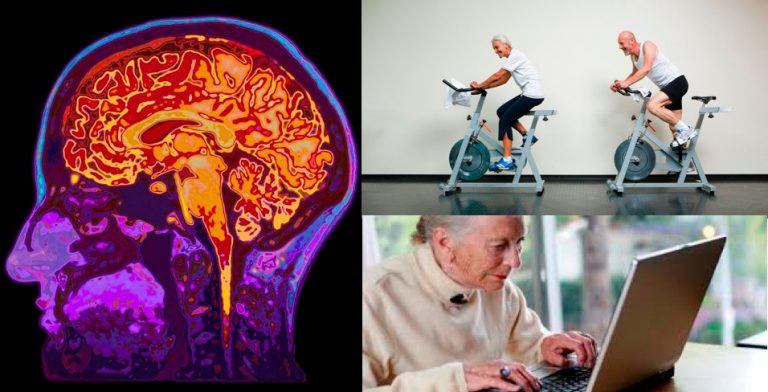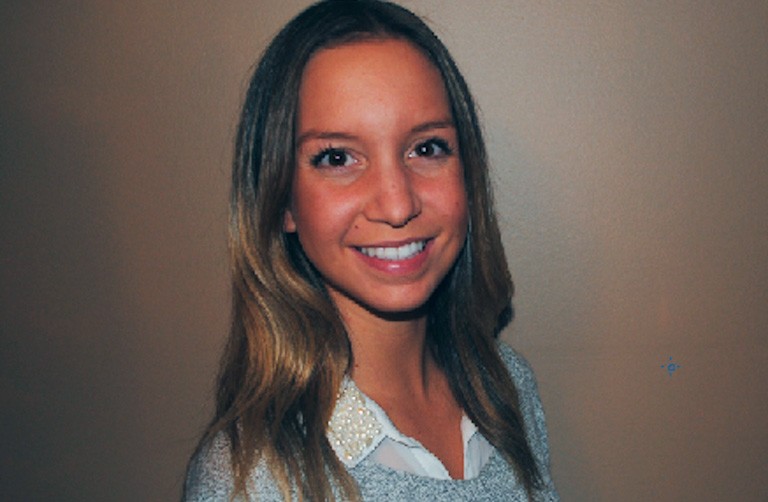PhD candidate Rachel Downey explores how training can slow cognitive and physical decline in late adulthood

Has anyone ever told you to stop and think for a second? Why is it that when we really need to reflect, we often have to refrain from moving?
Rachel Downey is a first-year PhD candidate in the Department of Psychology. As a member of the Li Lab: Laboratory for Adult Development and Cognitive Aging, her research broadly surrounds interactions between cognition and mobility, particularly in older populations.
Through her work, Downey hopes to improve the health and well-being of aging adults. She recently published her findings on the Sport Concussion Assessment Tool-3 (SCAT3) in Brain Injury, and currently works as a neuropsychology practicum student at Baycrest Health Sciences in Toronto and the Ontario Shores Centre for Mental Health Sciences in Whitby.
Older adults can take charge of their quality of life
How does this specific image (top) relate to your research at Concordia?
Rachel Downey: This image depicts different kinds of training for older adults and their effects on the brain. As aging populations continue to grow, there is great concern for individuals to maintain physical functioning and brain health. Currently, I investigate how training impacts cognitive-motor dual-task performance in older adults.
Studies show that walking is not as automatic as we once thought — it actually requires higher- level cognitive processes, such as planning and organizing. Performing a cognitive task while walking — or dual-tasking — can predict future risk of falls and impairments in older adults. But, there’s hope!
My research demonstrates that after three months of cognitive, aerobic exercise or gross motor coordination training, dual-task performance improves in older adults. Now, I want to use mobile neuroimaging devices, such as functional near-infrared spectroscopy (fNIRS) and electroencephalography (EEG), to elucidate the neural mechanisms of dual-tasking following training.
What is the hoped-for result of your project? And what impact could you see it having on people’s lives?
RD: The interaction between cognition and mobility changes as we age, but we don’t yet know how the brain adapts following training. Given that dual-task performance is a predictor of clinical outcomes such as dementia and future risk of falls, my research could help optimize intervention strategies aimed at slowing the progression of cognitive and physical decline in late adulthood.
 Rachel Downey: "No research question is impossible to pursue."
Rachel Downey: "No research question is impossible to pursue."
What are some of the major challenges you face in your research?
RD: Eligibility requirements restrict the types of individuals we can include in our studies. We end up recruiting high-functioning and healthy older adults, which may question the ability to generalize our results.
However, this research is a stepping stone. Once we understand how the healthy aging brain works before and after training, we can start to investigate unhealthy brain aging, such as mild cognitive impairment and dementia.
What are some of the key areas where your work could be applied?
RD: My research results will inform clinicians and individuals working in geriatric settings of the relationship between cognition and gait. I aim to show them how this relationship changes as we age and how we can prevent or improve deficits in dual-task performance.
What person, experience or moment in time first inspired you to study this subject and get involved in the field?
RD: My inspiration for this project came about after seeing my grandparents slowly deteriorate following their brain tumour and cancer diagnoses. While these medical problems are not isolated to older adulthood, educating the public on the benefits of cognitive and physical training promotes healthy living in aging populations. There is exciting research that shows how older adults can take charge of their quality of life by being both physically and mentally active.
How can interested STEM students get involved in this line of research? What advice would you give them?
RD: Volunteering in different labs and non-profit organizations will open doors for networking with other students and faculty, offer occasions to learn and apply knowledge outside of the classroom and determine whether this field is right for you. Working in diverse settings really made me appreciate and feel confident in my decision to study clinical psychology.
What do you like best about being at Concordia?
RD: No research question is impossible to pursue. My supervisor, Karen Li, has always kept an open mind to my ideas. Concordia’s PERFORM Centre is also a state-of-the-art facility for preventive health research that houses EEG and fNIRS systems, as well as an electronic gait mat. In addition, PERFORM hosts monthly colloquia and methods workshops. Its yearly conference is a great opportunity to present findings, network with other researchers in the field and learn new research techniques.
Are there any partners, agencies or other funding/support attached to your research?
RD: The Canadian Institutes of Health Research funds my research, as does the Ed Whitlock Award via the PERFORM Centre and Concordia.
Learn more about Concordia’s Department of Psychology.





